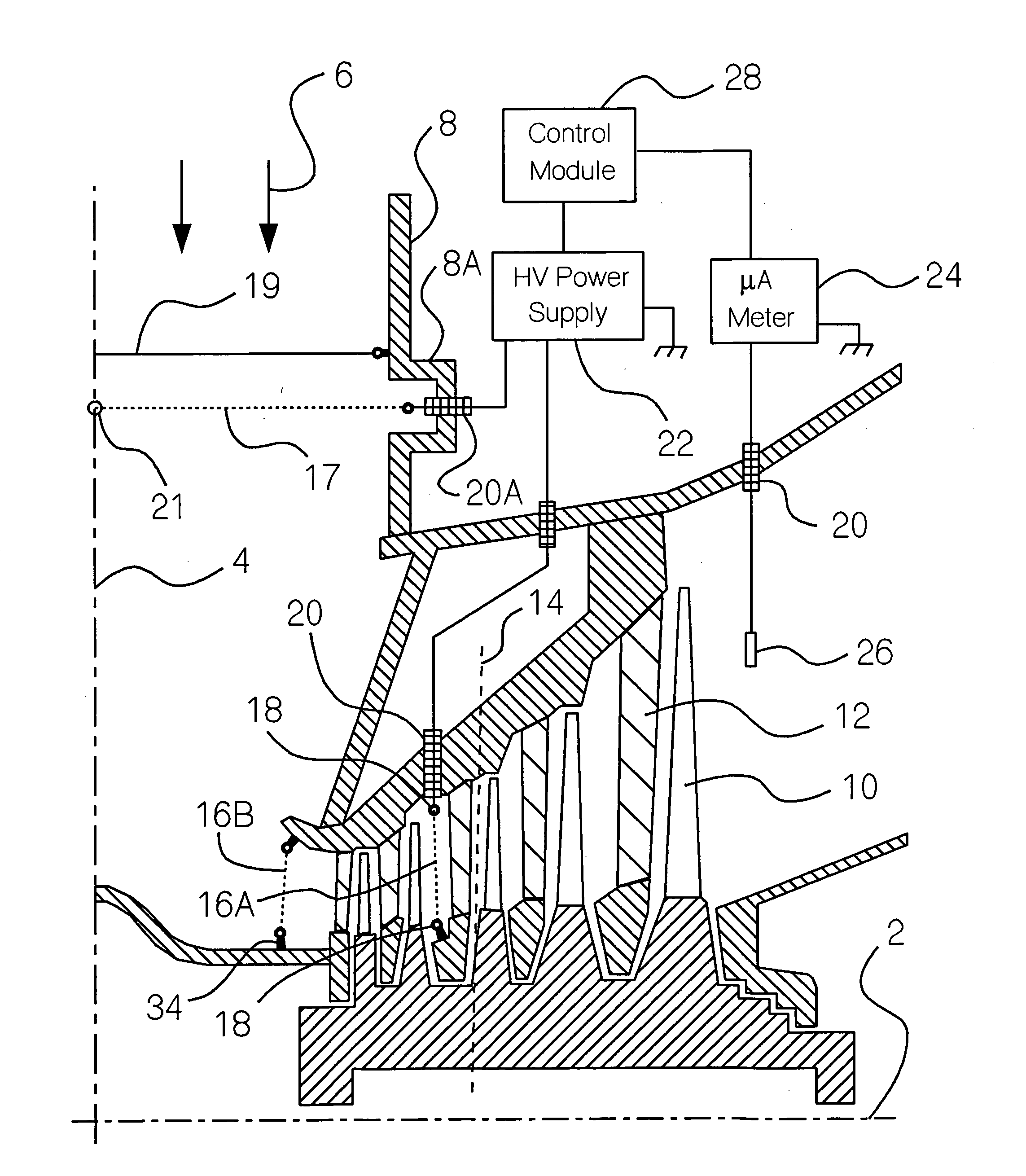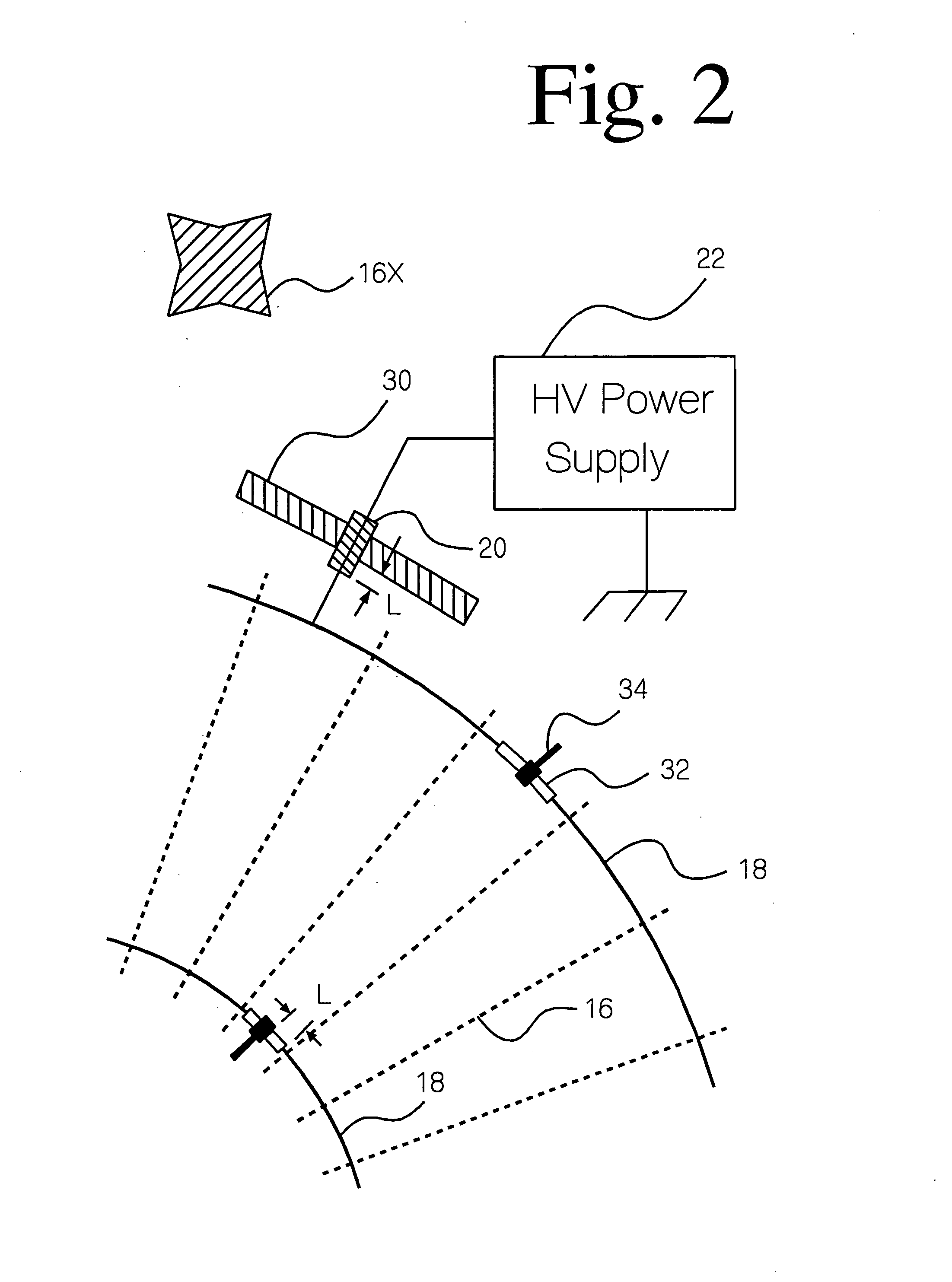Electrostatic method and device to increase power output and decrease erosion in steam turbines
a technology of steam turbines and electric motors, which is applied in the direction of machines/engines, mechanical equipment, liquid fuel engines, etc., can solve the problems of reducing the energy conversion efficiency of the turbine, damaging the blades by erosion, etc., and achieves the effect of reducing the subcooling, enhancing condensation inside the turbine, and reducing the average size of water droplets present in the steam
- Summary
- Abstract
- Description
- Claims
- Application Information
AI Technical Summary
Benefits of technology
Problems solved by technology
Method used
Image
Examples
example 2
[0079] An existing LP turbine can most easily be provided with this invention by installing corona electrodes 17 inside steam pipe 8 just before it connects to the steam chest of the LP turbine. This installation can be realized with no modifications to the turbine itself. Preferably, three corona electrodes 17 are installed in a coplanar disposition, spaced at 120° apart and electrically interconnected at crossing point 21. Corona electrodes 17 are suspended between insulators 20A which are preferably mounted inside recesses 8A in the wall of steam pipe 8 to shield them from direct impact of the steam flow and minimize drag. At least one of insulators 20A must be a feed-through insulator, allowing an electrical connection of corona electrodes 17 to high voltage power supply 22.
[0080] Optionally, grounded counterelectrodes 19 are installed upstream of corona electrodes 17 and in parallel with them to even out the electric field intensity and promote an even distribution of corona d...
example 3
[0083] Corona electrodes can be installed at another location before the LP turbine blades, for example semirigid corona electrodes 16B installed just before the steam enters the blades of the LP turbine. The construction illustrated in FIG. 2 is suitable for this location as well, but high activity semirigid electrodes must be used because of the high steam density; for example, a linear metallic brush, or a serrated strip. To provide an even distribution of charge, the distance between the midpoints of adjacent electrodes should be no greater than the distance from the electrodes to the first row of turbine blades or the first diaphragm encountered by the steam. Thirty-six semirigid electrodes 16 attached to two collector rings 18 would be appropriate for the location depicted in FIG. 2. The specification for high voltage power supply 22 needed to power corona electrodes 16B would be the same as needed to power corona electrodes 17.
PUM
 Login to View More
Login to View More Abstract
Description
Claims
Application Information
 Login to View More
Login to View More - R&D
- Intellectual Property
- Life Sciences
- Materials
- Tech Scout
- Unparalleled Data Quality
- Higher Quality Content
- 60% Fewer Hallucinations
Browse by: Latest US Patents, China's latest patents, Technical Efficacy Thesaurus, Application Domain, Technology Topic, Popular Technical Reports.
© 2025 PatSnap. All rights reserved.Legal|Privacy policy|Modern Slavery Act Transparency Statement|Sitemap|About US| Contact US: help@patsnap.com



